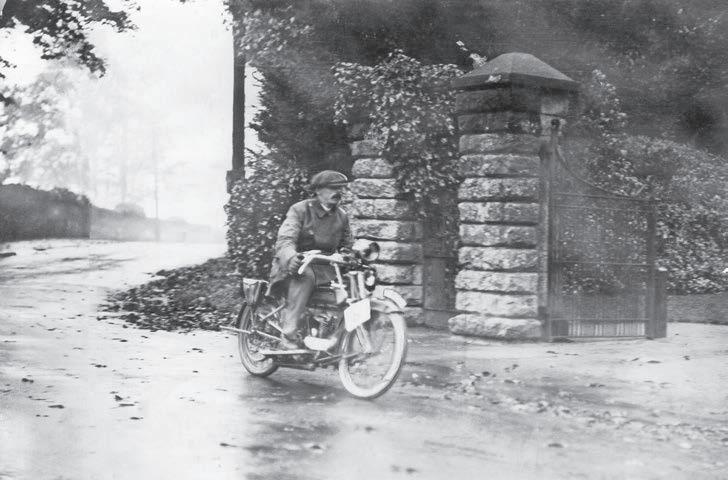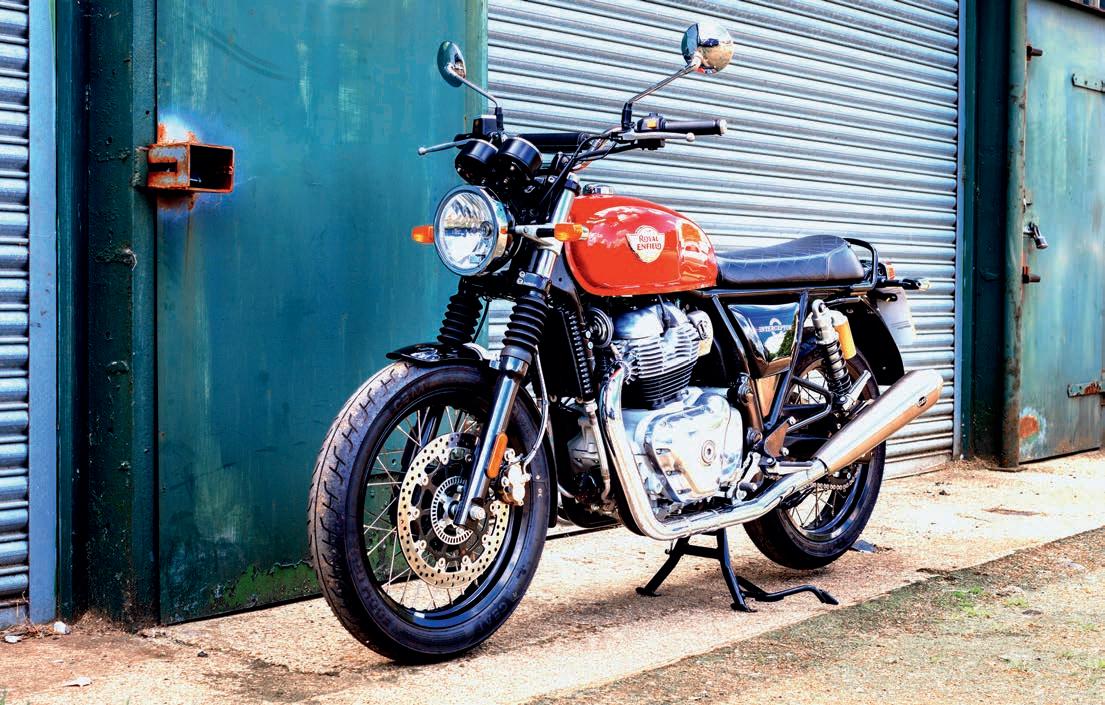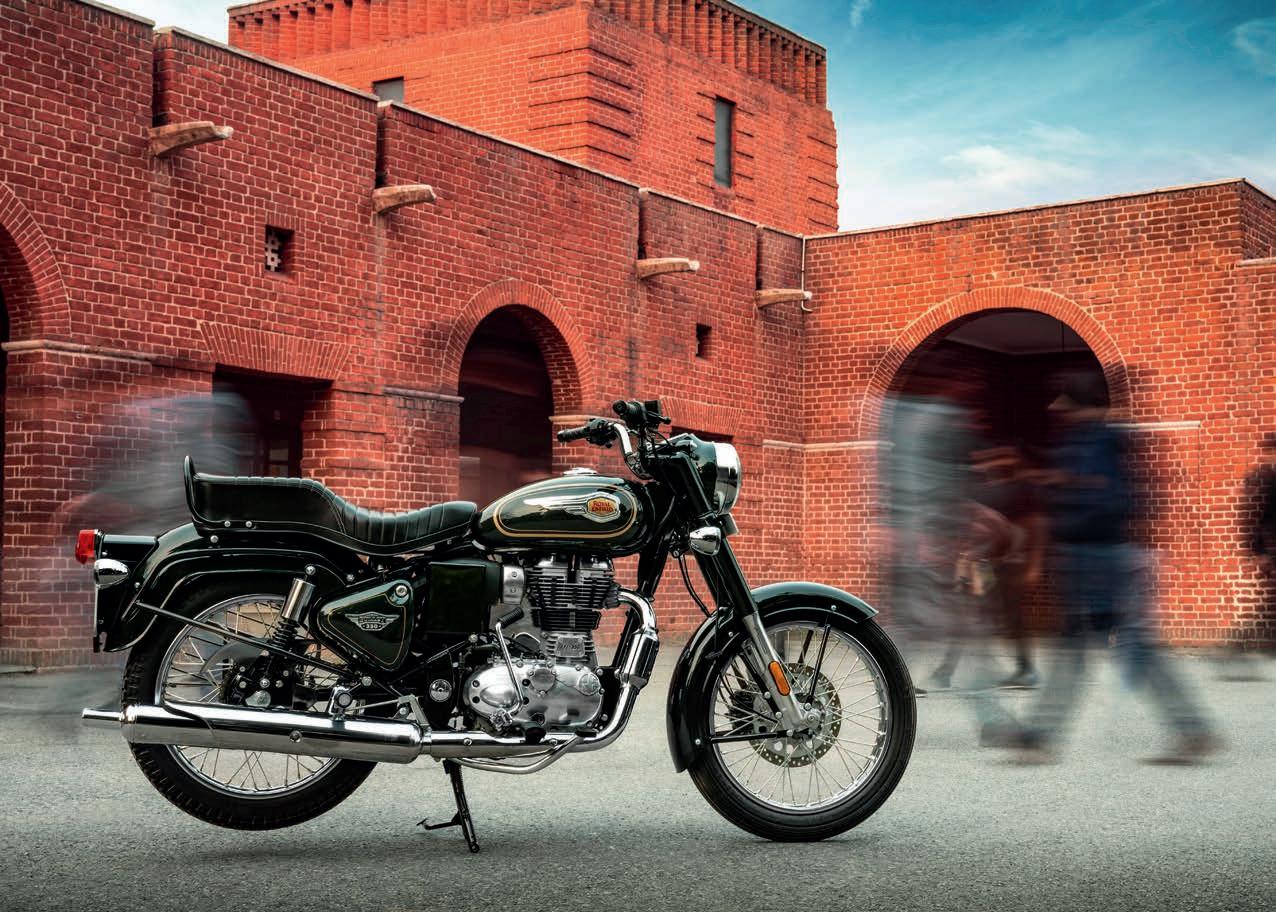
9 minute read
INTRODUCTION
Royal Enfield is at once an historic motorcycle company with a truly unique heritage and a dynamic, modern concern with an exciting and profitable future ahead. Furthermore, while its bikes are creating millions of happy motorcyclists around the world, its business philosophy is blazing a trail for other manufacturers to follow, and in the process showing the way forward for motorcycling itself. That Royal Enfields have been in continuous production longer than any other motorcycle, and that the single-cylinder Bullet has been built and sold for more years in succession than any other bike in history, are statements of fact, albeit ones that require a degree of clarification. The firm, which had its beginnings in light industrial manufacturing in the English Midlands in the mid nineteenth century, began making motorcycles in 1901, a year before Triumph (which in any case dropped off the scene for much of the 1980s), and two before Messrs Harley and Davidson began production in Milwaukee, SA. In continental Europe BMW and Moto-Guzzi both began building bikes in 1921.
hat makes Royal Enfield unique is its dual heritage. The story is quite well known. hile the English firm closed its Redditch factory’s doors in 1967, and went out of business completely in 1970, an independent Indian offshoot, which began selling Enfields in the 1940s and manufacturing them in the 1950s, continues as Royal Enfield to this day. And whether in the English Midlands or faraway Madras (or Chennai as it is now known), the Bullet has been built continuously since 1948, making it without doubt the longest-produced motorcycle in history. In fact, there were pre-war Redditch Bullets, but these were not part of the same lineage.
Advertisement

The Indian firm has become a global behemoth, massive in scale and scope compared with its British progenitor. But like its forebear it has, throughout its history, remained a paternal, family- run company, owned and staffed by enthusiasts who love and ride the product. This holds true to an extent, even today. Around 15,000 Bullets were made in Redditch and several million Bullets and Bullet-derived Classics and cruisers have been built in Chennai. This alone is enough to ensure they will be a feature on roads all around the world for many years to come, but now an all-new Classic 350 has been launched and is set to keep the bike in the sales charts for the foreseeable future. Like its recent ancestors, today’s new Bullet is, in spirit, still a 1950s machine, but one that has been much improved, refined and made immeasurably more reliable, especially in its most recent incarnation. Over nearly 70 years the Enfield single has become part of culture and everyday life on the Indian sub-continent, providing practical transportation, positively affecting the lives of millions, and winning countless hearts and minds. And while it has continued to sell as an everyday motorcycle in its home market in formidable quantities, it has been exported around the world in steadily increasing numbers as a charming and delightful anachronism - a classic motorcycle that can be bought brand new with a warranty. Classical transportation of a time-travelling kind. But it is the exciting, new forward-looking models the firm has been exporting since 2018 that are starting to change the nature of modern motorcycling, and now the new Classic 350, launched globally in 2022, represents a convergence of these two trends.
In the later 20th century, while continuing to produce mostly homemarket Bullets by the thousands, Enfield India experienced various financial ups and downs until a takeover by the Eicher commercial vehicle group, with Bulletriding enthusiast Vikram Lal at its head, brought greater stability. Then his son Siddhartha Lal took the helm, instigating a new strategy and broader ambition. estern educated and a polymath, Lal is a charismatic and sophisticated man, but above all he is a proud Indian, and a dedicated motorcyclist who as a teenager would sneak out for rides on his father’s Bullet. Siddhartha Lal brought change. A new philosophy. His plan, to design and produce completely new models, and to improve engineering and build-quality standards at his factories to Japanese levels. For it was the Japanese motorcycle manufacturers - the still extant Yamaha, Suzuki, Kawasaki, and most of all Honda - who in the 1960s produced new motorcycles of such exquisite quality and of such reliability, and to many and various exciting, innovative designs, that over little more than a decade they killed the entire British motorcycle industry in its tracks; and of course the casualties included Royal Enfield of Redditch.
Japanese bikes in the sixties were also excellent value for money. Supplying the vast South East Asian market and a not inconsiderable need at home made for huge economies of scale. Additionally, machine tools and factory methods were fully up-to-date and geared to mass production, and clever design also helped keep costs down, whereas British bikes were still a product of machine shop engineering practices. Lal learned these lessons well and sought to reapply them. He also noted that at the beginning of the twenty-first century motorcycling was in global decline. Times had changed. Many of the world’s roads were becoming crowded. Bikes had got too big, too powerful, and too expensive, and onerous rider legislation was choking off the supply of new recruits. He sought to bring about a reset, aiming to produce affordable, well-made, highly-usable medium-capacity motorcycles; and by doing so broaden motorcycling’s appeal and grow the market as Honda had done in America in the sixties with their highly successful ‘You Meet the Nicest People on a Honda’ advertising campaign. To Lal this was more than a business strategy. It was also and fundamentally about being pro motorcycling. Of course, Royal Enfield was in business to make profits and reward its investors, but first and foremost his vision entailed making top-quality motorbikes, products to be proud of and which bring joy to their owners. Then with these machines he aimed to set about reviving and expanding motorcycling around the world. In the last few years Lal’s ambitious plan has started to bear fruit. In the mature and influential K and European market Royal Enfield has experienced tremendous sales growth, sales are also building strongly in the USA, and performance in the company’s huge and diverse home market remains robust despite fierce and targeted competition.
The first all-new Royal Enfield machine to roll off the production line as part of the Lal vision was the 411cc Himalayan. A highly practical, go-anywhere adventure bike first introduced in India in 2016, it was exported worldwide from 2018 onwards. That same year the Indian company green-lit the construction of a 2.5 million technology centre in Leicestershire, England. The new facility, which came on stream in 2017, became the company’s global headquarters for product strategy and development, featuring comprehensive design, engineering and testing facilities and an extensive private test track. Then, in late 2018, wholly new 650cc Interceptor and Continental GT parallel twins started rolling off the company’s production lines. These bikes were named after models from Enfield’s English past, and by deliberate design they were not overendowed with electronic technology, but they were, nonetheless, thoroughly modern motorcycles, engineered to exacting contemporary standards and backed by a Honda-beating three-year standard warranty. pon their release it was telling Royal Enfield did not state a specific target demographic (nor had they with the Himalayan). Instead Lal made it clear Royal Enfield’s intention was not just to find buyers for these motorcycles around the globe, but to revive and increase interest in motorcycling itself. These most attractive, supremely capable and not least, highly affordable bikes were, and still are, above all about making middleweight motorcycling accessible and fun again.

Launched in India in late 2020 and globally the following year, the 350 Meteor was a fourth new model from Lal’s company. Built on a third completely new engine-chassis platform, and given another storied name from the firm’s history, it was a cruiser-style bike made available in three cosmetically differentiated variants, all sharing the same 350cc four-stroke, single-cylinder overhead camshaft engine. An abundance of torque gave the new engine great character as well as plenty of usable power, and its distinctive exhaust note, while differing in tone from that of the existing Bullet, had definitely got the Enfield ‘beat’ - the heartbeat of India. Laid-back, comfortable cruisers are a part of Royal Enfield culture in India, especially among younger riders, and small to medium-sized bikes are becoming increasingly popular in other countries. Biker demographics are changing worldwide and Enfield had once again spotted an underestimated market sector and moved to serve it. Furthermore, as industry pundits were quick to realise, the Meteor platform would soon form the basis of a new generation of Bulletstyle machine. The Classic 350 would be launched in India in September 2021, with worldwide roll-out scheduled for the first half of 2022. The Meteor bristled with bright ideas and lovely design touches, not least Royal Enfield’s own Tripper satellite navigation system. These capable yet userfriendly middleweights are great beginner bikes and perfect too for older bikers, perhaps becoming less able to manage a big machine and looking for a stressfree way to extend their motorcycling adventures. They are also ideal city bikes and perfect alike for Sunday afternoon rides or long-distance cruising. In short, the Himalayan and the 650cc twins and the Meteors were great all-round motorbikes designed primarily to help people discover the practicality of motorcycling while capturing, or recapturing, its magic. And they were sold at value-for-money prices. Meanwhile, the Royal Enfield Bullet had remained a miracle machine, living on out of its time. Through long service and ubiquity it had cemented its place in the life and culture of a huge and great country, and it rode on around the world, provoking smiles and winning friends wherever it appeared, emblematic of the proud and historic company that made it. Now the new 350cc Classic represents a new generation of Bullet, carrying the story on into the future where further chapters are yet to be written.

Modern And Classic Scene
A significant number of Redditch Royal Enfields are still on the road today, some in oily rag condition, many others having been faithfully and painstakingly restored. No account of the present-day
Royal Enfield classic and retro-classic scene would be complete without acknowledging the ongoing contribution of Hitchcocks Motorcycles. This specialist family-run concern based in Solihull in the English Midlands, exports Royal Enfield spares and accessories around the globe as well as serving a busy home market. Over 38 years the company has built up a phenomenal range of stock and developed an overall level expertise that is second to none worldwide. All Redditch machines from 1939 onwards are well provided for, together with all exported Indian Bullets, many now recognised as classics in their own right. Modern-day Chennai models are also covered, the firm having developed highquality performance parts and accessories in its spotless engineering workshop as well as buying-in selectively from India and elsewhere. The whole Hitchcock family has been involved in the business at various times, and founder Allan, his son Daniel and many of their staff are true Royal Enfield enthusiasts. ithout doubt Hitchcocks Motorcycles is very much a part of the Royal Enfield story. Also central to modern-day Enfield ownership is the Royal Enfield Owners’ Club (REOC) which was founded in the mid-late seventies after an earlier incarnation folded in the mid sixties (that club’s demise exactly mirroring that of the original Redditch factory). The aim of the REOC is to promote the riding, maintenance, restoration and history of all Royal Enfield motorcycles regardless of age or origin. It produces an excellent bi-monthly maga ine, and offers technical assistance and an excellent dating service as well as regional, national and international friendship and fellowship.
Looking Forward
Royal Enfield of India now has three engine and chassis platforms on which to develop new models. A new generation of Bullet is being brought to market, rumours persist regarding a largecapacity street scrambler, and a parallel twin cruiser now seems to be on the way. More exotically, a V-twin concept bike exists, setting enthusiasts salivating at the prospect of a flagship model inspired by the luxurious large-capacity K and KX machines built in Redditch in the 1930s. hatever the future holds, Royal Enfield is a company taking the initiative.

hile carrying the Royal Enfield name forward to a new generation of riders, it is rethinking what motorcycling is all about, and through this it finds itself at the forefront of a larger movement to save the sport. It is a factory making the right bikes for the times and doing the biking world a good turn.
This publication is in part a celebration of that effort, and of the motorbikes the company makes today, but a greater part of it is an account of the unique history of a marque which in 2021 spanned 120 years and counting. It is a story of human effort and endeavour on two continents, manifesting itself in a combined total of 138 years of motorcycle production in India and England - 69 years in each country! ■


